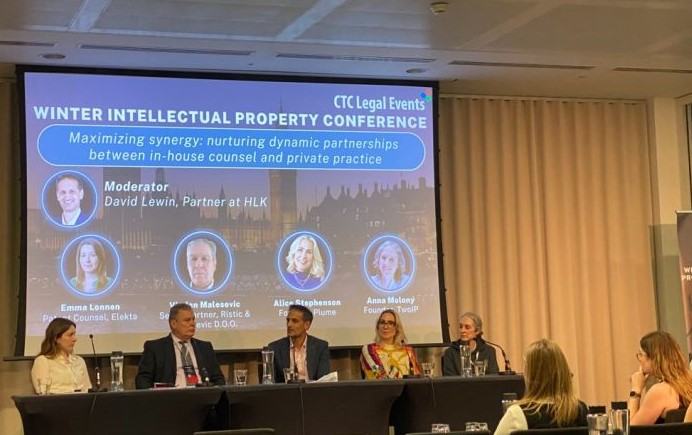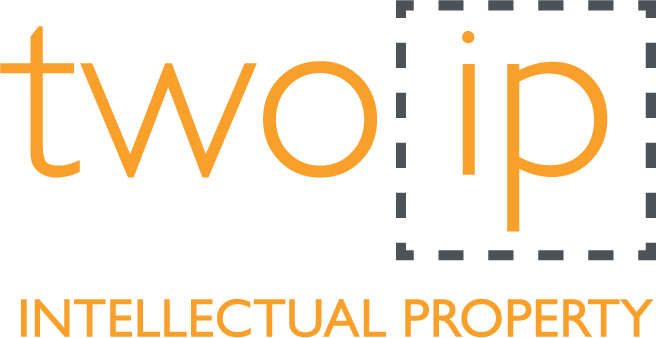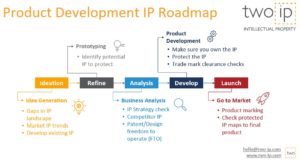
Two IP founder and director Anna Molony was recently invited to speak at the CTC Legal Media Winter IP Conference. Here, Anna shares the key takeaways from the discussion on the day for those unable to attend the event.
As part of the panel at the CTC Legal Winter IP Conference session “Maximizing synergy: nurturing dynamic partnerships between in-house counsel and private practice” I shared some of the things I’ve learnt from being in-house counsel and from working with in-house counsel clients as an attorney in private practice.
For those who didn’t make it to the Conference, here are
The 3 most important things I’ve learned about optimizing working between patent in-house counsel and private practice attorneys:
- Private practice attorneys – sometimes you really do need to have a serious level of expertise in the technology to protect it properly
- In-house counsel – don’t underestimate the value of giving the private practice attorney you’re instructing the business context of the invention
- In-house counsel – be really clear about how you want the private practice attorneys you’re instructing to do the work you give them
So, how come I know about this?
Well, I’ve been on both sides of the in-house counsel/private practice relationship.
For a couple of years, I was in-house counsel at a high-tech, spin-out called Indigo Photonics. Indigo made optical fibre sensors and I lead the IP function internally, with external support from a private practice firm who did the filings and so on. During my time at Indigo I learnt about how R&D teams work and how to work with them, and I learnt about where IP sits within an early stage, VC funded business and I learnt a lot about what an in-house attorney needs from their private practice outside counsel.
As an attorney in private practice, I have worked closely with a number of corporate in-house IP teams, mainly with their patent departments. Each relationship is different in terms of the work that I do and how I do it. For one client, we are that outside resource that does the filings and so on, for another I have been drafting patent applications for nearly 20 years, and for a third I work 1 day per week for them, as a fully integrated part of their patent team.
I’ve learnt a lot about that relationship from working with each of those clients.
Let’s take a look in a bit more detail at those 3 most important things for optimizing working between patent in-house counsel and private practice:
- The problems that can arise if the private practice attorney doesn’t understand the client’s technology properly
As patent attorneys, we are great at getting our heads around a wide range of technologies and understanding them to a level that is “good enough” for us to be able to advise our clients. But, for clients who are leading the way in their technical fields, having a “good enough” understanding of the technology sometimes just isn’t, well, good enough. Expertise is needed.
I’ve seen enough poorly drafted patent applications in my areas of expertise (optical comms, optical fibre, lasers, photonics) over the years to know the problems that not properly understanding the client’s technology can cause. This is how it sometimes goes: I read the patent claims and I think “Hmmm”, and then I read the description, particularly the bits that have clearly been pasted in from the invention disclosure, and I think “Double hmmm. I can see what the invention is but that’s not really what the claims are covering”.
I have, in those circumstances, then had to draft an exam response – it’s not straightforward, overcoming the Examiner’s objections while at the same time trying to redraft the claims to cover the invention properly. I’ve also had to handle exam reports where the patent office Examiner hasn’t properly understood the invention. Both can cause serious limitations to the scope of the patent you can get and therefore on the commercial value of the patent.
In some areas of technology, if you don’t have a depth of understanding of the technology, you simply can’t describe it, and define the claims, properly. And, if the examiner doesn’t understand the technology, how can you explain where they’ve gone wrong if you don’t understand it fully yourself?
So, my first lesson to share would be this: in-house counsel, make sure that your outside private practice attorneys have the necessary level of expertise to fully understand your technology; and private practice attorneys, don’t take on work that you’re not technically qualified to cope with.
- The value of in-house counsel giving private practice attorneys the business context of the invention
The amount of information about an invention that you receive from a client can massively impact the quality of the work that you can do.
At one extreme, I’ve prepared exam responses where all I’ve had is the published application, the exam report, the prior art, and instructions to prepare a response that overcomes the objections. Now, I can absolutely do that. But without any access to the inventor or any information about which features of the invention are commercially important, my response may not actually result in commercially useful protection.
At the other extreme, one of my clients gives me access to a brilliant internal document that they have for each patent family. It’s a narrative of where the invention came from, what the commercially important features are, what’s happened during the prosecution of each application in the patent family, and notes from the inventors and in-house counsel. It is a fantastic source of context and supporting information for me when I’m preparing an exam response or considering whether we need a divisional application to protect any other features. I can highly recommend writing this type of document, the time spent is well worth the effort.
- The value of in-house counsel being really clear about how they want the outside counsel to do the work.
As in-house counsel, how tightly do you want to control how the private practice attorney that you’re instructing does the work you give them. What drafting style should they use? Is there an in-house style or are you happy to let them draft in their own way?
I’ve got a lot of experience of drafting applications using a template and very detailed drafting style guidelines from the client. But I also have clients whose in-house counsel are happy for me to draft in whatever style I think best, on the basis that I know as much about the technology as they do. Both have their merits and their disadvantages.
The first approach can result in a very highly controlled patent portfolio but it requires a significant amount of input from in-house counsel. And not every qualified attorney will be happy having their work scrutinized on a regular basis. I’m used to it and I’m pretty comfortable with it because I think there’s always something new to be learned.
The second approach, letting people work in their own way, will probably be more comfortable for most private practice attorneys. And I think drafting can be easier to do if you’re not trying to squeeze it in to someone else’s preferred approach. However, it may mean that your patent portfolio is less consistent and, possibly, of more variable quality.





